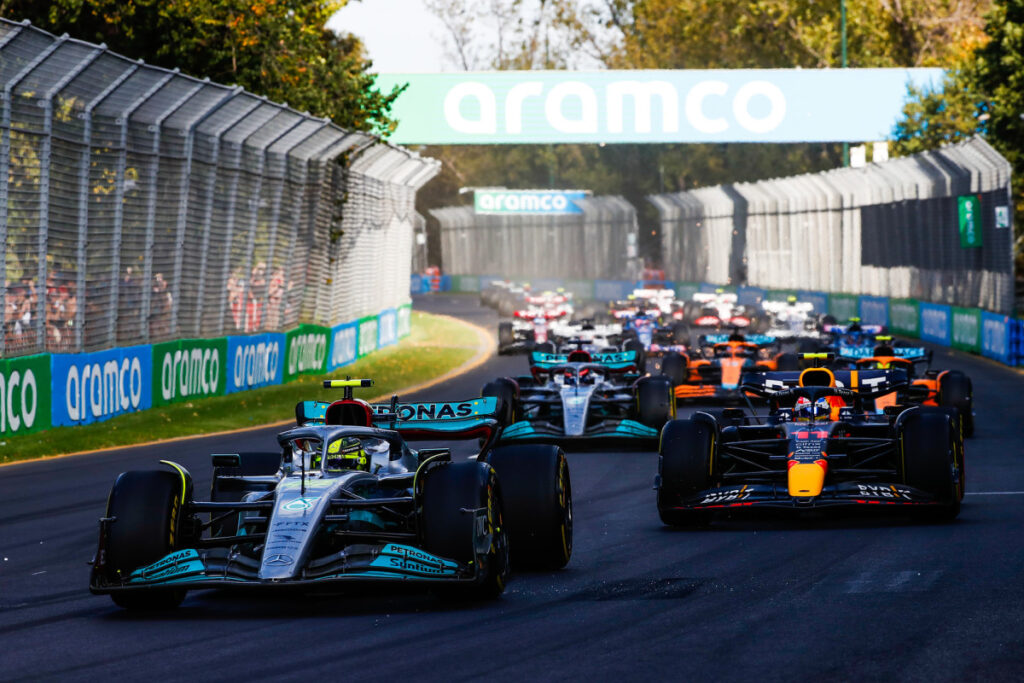What’s the deal with F1 Sprint Races?

Note: This story has been updated as of April 26th, 2023 to incorporate the new sprint rules. Please see: F1’s New Sprint Race Weekend Format Explained
In 2021, Formula One decided to shake things up a little by changing the weekend format at a handful of races. The idea was to create some more drama and excitement leading up to the race on Sunday. The experiment has been popular with most fans and drivers but not without some controversy. Most notably, Max Verstappen has stated, “I’m happy with just the main race. I think that’s way better for the excitement. Naturally, of course, I hope there won’t be too many changes, otherwise I won’t be around for too long.” In all fairness, Verstappen was partially responding to a report that F1 CEO, Stefano Domenicali, thought the sport could manage as many as thirty-two races in a year, with some additional tweaks to the format, which is ridiculous.
“I’m happy with just the main race. I think that’s way better for the excitement. Naturally, of course, I hope there won’t be too many changes, otherwise I won’t be around for too long.” -Max Verstappen
Like it or not, sprint races are here, at least for the near term, as reports on viewership from the 2022 season indicate more people watched on sprint-race weekends. So, for 2023 the number of sprint races has increased from three to six, which means that about 25% of race weekends will hold a sprint race in addition to the feature race. But, what exactly is a sprint race and how does it work?
A sprint race is exactly that, a sprint. It’s a mad dash for 100 kilometers (62.137 miles), which is approximately one third the length of a grand prix (305 kilometers). The short distance means that tire changes aren’t necessary and pit stops are not required. What makes it interesting is that points are awarded to the top eight finishers, starting with eight points for first and going down to one point for eighth. If a driver can win all six sprint races that’s an extra forty-eight points. Nice, right? Unfortunately, there can be some serious consequences if a team or driver doesn’t perform well or has some bad luck. Mainly because at the feature race on Sunday, the cars will line up on the starting grid in the same order they finish the sprint race.
So, it’s possible to qualify in a high position for the race, only to lose that position going into Sunday. What’s worse is that if an overly opportunistic driver decides to go for an overtake that defies the laws of physics, he may destroy his own car or someone else’s, and their weekend might be over before the feature race even begins. It makes for an exciting weekend from the fan’s perspective, but a bit of a headache and a throw of the dice for the teams.
A typical race weekend begins with two free-practice sessions on Friday, followed by another practice on Saturday and then qualifying. It’s all a build up to the race on Sunday. Teams are able to test aerodynamics and grip at the first practice, moving on to tire wear over long runs in the second practice. The third and final practice session typically focuses on qualifying pace as teams get ready to find out who’s the fastest over one lap. The tension ratchets up all weekend while lap times go down. Qualifying becomes a measure of how well teams and drivers have set the car up to perform under the current track conditions. The race on Sunday is without a doubt the main attraction. On sprint race weekends, however, the schedule changes to the following:
- Friday- 1st Practice
- Friday- Qualifying
- Saturday- 2nd Practice
- Saturday- Sprint Race
- Sunday- Feature Race
There is no doubt that from the fan’s perspective it’s exciting to see qualifying on a Friday and races on both Saturday and Sunday, but with only one practice before qualifying, the cars won’t be putting in their best lap times and there will be more room for driver error. That being said, teams and drivers will have a chance to reconcile their shortcomings at the second practice on Saturday and potentially make up a few places during the sprint race. It gives drivers who don’t qualify well for one reason or another a chance to make up for it. It’s also an advantage for teams that have good race pace but aren’t quick over one lap. These sprint races were originally referred to as sprint qualification races and points were only awarded to the first three finishers, with three points being the maximum. Now that there are six sprint races and a much larger points haul, they can’t be written off as a side-show. They are, in fact, a major part of the main event. The best way to look at them now is as the first stint of the feature race, ending with a red flag, points awarded, and a restart the following day. It will be interesting to see if more will be added in the future and how teams will adapt to the new format.